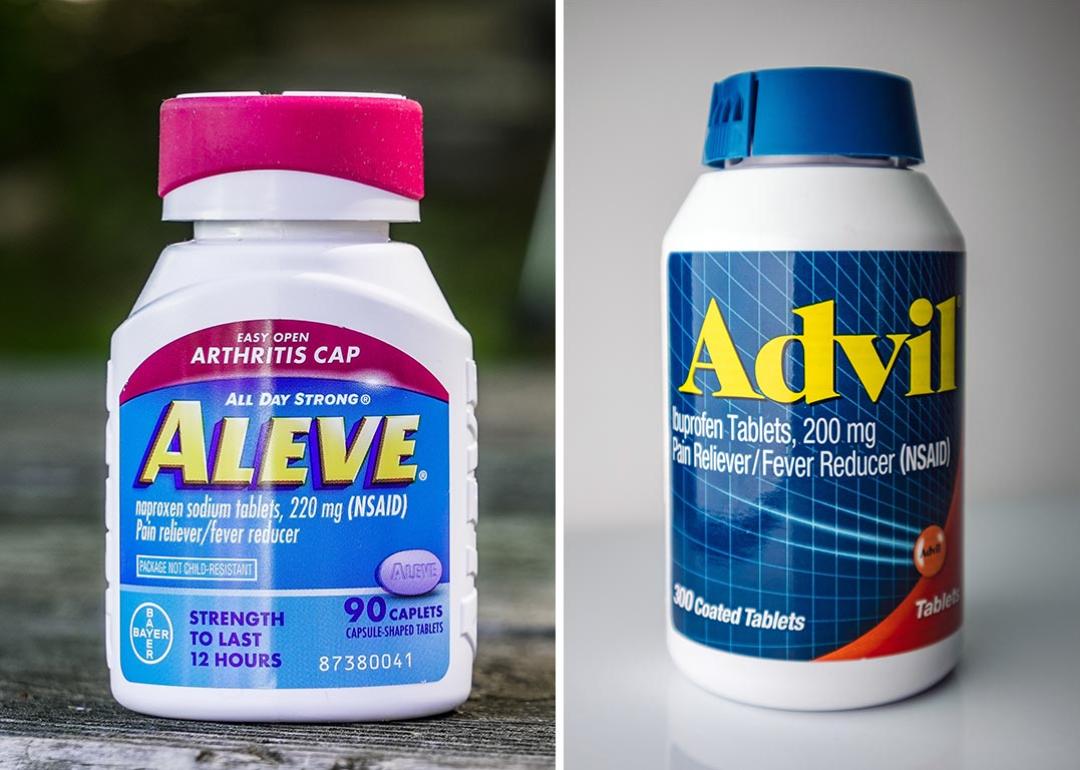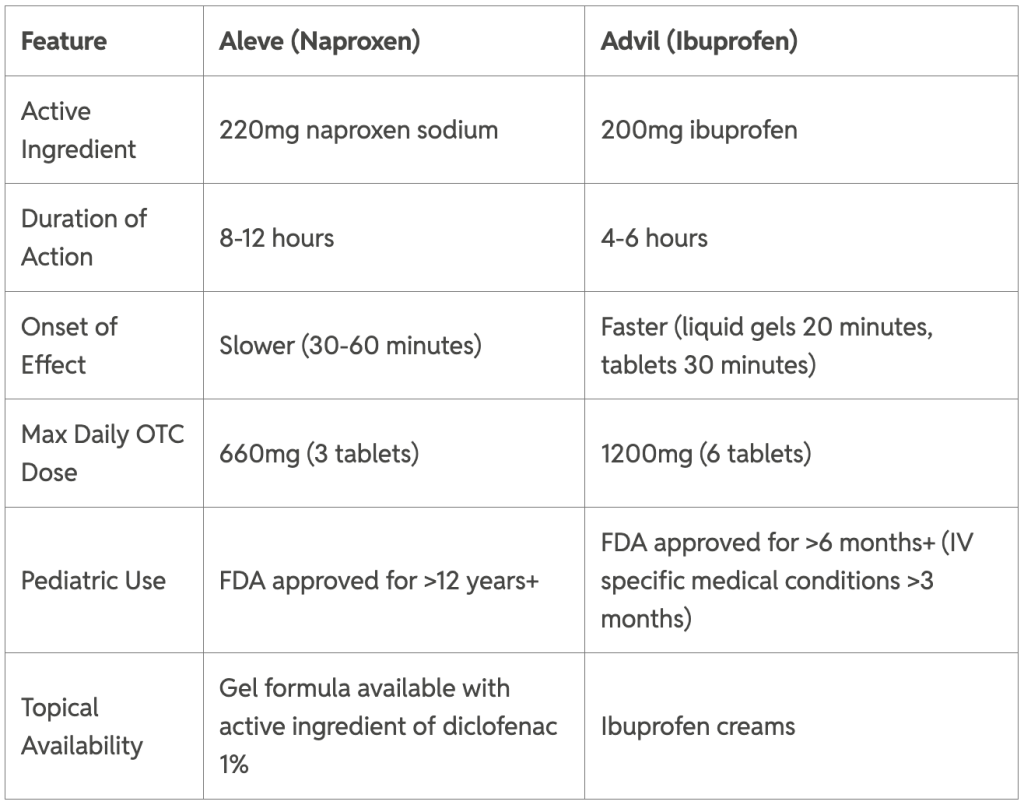
Aleve vs. Advil - What's the difference? Comparing these NSAIDs
Aleve vs Advil - What's the difference? Comparing these NSAIDs
Aleve (naproxen sodium) and Advil (ibuprofen) are two of the most widely used over-the-counter nonsteroidal anti-inflammatory drugs (NSAIDs) for pain relief and inflammation. While both medications share similarities in their ability to reduce fever and alleviate discomfort from headaches, muscle aches, and arthritis, key differences in their duration, dosing, and safety profiles make each unique. This comprehensive guide from SaveHealth, a prescription discount website, compares these pain relievers to help you make informed decisions about which medication best suits your needs.
Aleve vs Advil - Key Similarities
Both Aleve and Advil:
- Belong to the NSAID class.
- Inhibit COX-1 and COX-2 enzymes to reduce pain/inflammation.
- Treat common conditions: headaches, menstrual cramps, arthritis pain, muscle strain, and fever.
- Carry FDA warnings about cardiovascular and gastrointestinal risks.
- Available in multiple forms (tablets, gelcaps, liquid suspensions).
Aleve vs Advil - Critical Differences

Advil vs Aleve - Side Effect Comparison
Common to Both:
- Heartburn
- Stomach irritation
- Dizziness
- Fluid retention
- Nausea
Unique Risks: Aleve vs Advil

Studies suggest Advil may cause fewer stomach ulcers, while Aleve may pose lower cardiovascular risks at recommended doses.
Aleve vs Advil - Dosage Guidelines
Aleve
- Adults: One tablet every eight to 12 hours.
- First dose: Two tablets if needed.
- Not to exceed three tablets every 24 hours unless authorized by a physician.
Advil
- Adults: One to two tablets every four to six hours.
- Not to exceed six tablets every 24 hours.
- Pediatric dosing by weight:
- 3-23 months: 50 mg/1.25 ml
- 2-11 years: 100 mg/5 ml, chewable form also available
- Weight base: 5-10 mg/kg per dose
Always take with food and water to reduce stomach irritation.
Advil vs Aleve - Safety Considerations
Cardiovascular:
- FDA warns all NSAIDs increase heart attack/stroke risk.
- Aleve may have slightly lower cardiovascular risk based on long-term studies.
Gastrointestinal:
- There is a 30% higher GI bleeding risk with Aleve, according to the Cleveland Clinic.
- Proton pump inhibitors (PPIs) may be recommended for long-term users.
Special Populations:
- Avoid both medications in the third trimester of pregnancy.
- Use caution with kidney disease, high blood pressure, a history of ulcers, and blood thinners.
Aleve vs Advil - When to Choose Each Medication
Aleve Works Best For:
- Chronic conditions (e.g., osteoarthritis)
- Prolonged pain relief needs
- Patients at higher cardiovascular risk
Advil Preferred For:
- Acute injuries (sprains, strains)
- Fever reduction in children
- Short-term use (<10 days)
- Patients with stomach sensitivity
Clinical trials show both are equally effective for most pain types when used appropriately.
Important Warnings
1. Never combine Aleve + Advil because it increases toxicity risks.
2. Watch for cross-medication ingredients (e.g., cold/flu products).
3. Discontinue use if experiencing: chest pain, vision changes, black stools, slurred speech.
4. 60% of NSAID-related hospitalizations involve improper dosing, according to NIH data.
This story was produced by SaveHealth and reviewed and distributed by Stacker.



